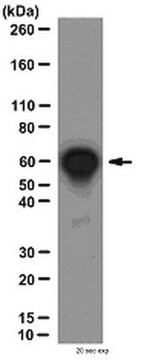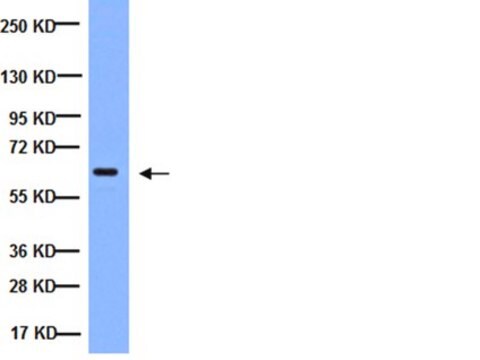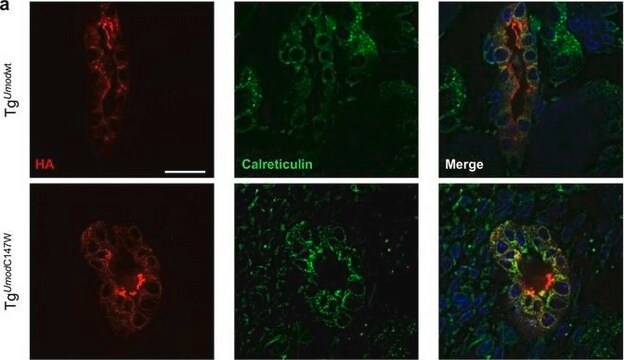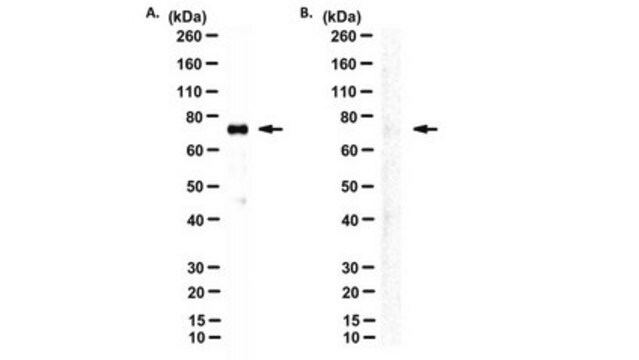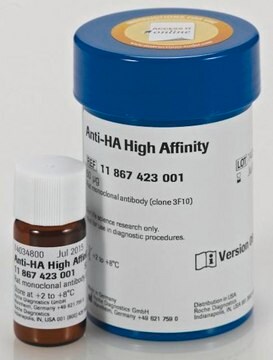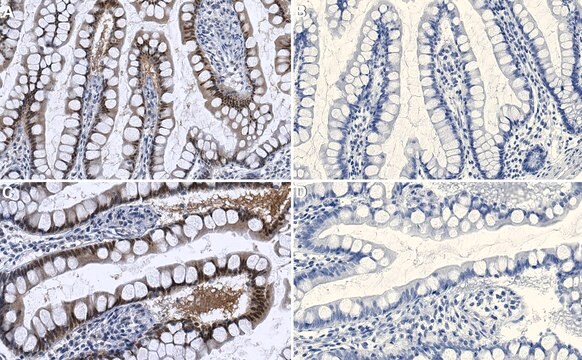ABE251
Anti-N-CoR Antibody
from rabbit, purified by affinity chromatography
Synonym(s):
Nuclear receptor corepressor 1, N-CoR, N-CoR1, Retinoid X receptor-interacting protein 13
Sign Into View Organizational & Contract Pricing
Select a Size
All Photos(1)
Select a Size
Change View
About This Item
UNSPSC Code:
12352203
eCl@ss:
32160702
NACRES:
NA.41
Recommended Products
General description
In the absence of ligands, the corepressor N-CoR represses nuclear hormone receptor-mediated gene transcription. In the presence of ligands, these hormone receptors activate gene expression and play critical roles in development, growth, and homeostasis. N-Cor-mediated transcriptional repression is facilitated through the formation of histone deacetylase (HDACs) N-CoR complexes or by conjugation from small ubiquitin-like modifier 1 (SUMO-1). It is shown that the SANT1 domain of N-CoR serves as a binding region for SUMO-E2 conjugating enzyme Ubc9 and SUMO-E3 ligase Pias1, which is necessary for N-CoR-mediated repression of respective reporter genes. SUMOylation-deficient N-COR knockout mice display a signification reduction in the repression of gene transcription and result in defects involving the differentiation and development of neural cells into erythrocytes and thymocytes.
Immunogen
KLH-conjugated linear peptide corresponding to a region between amino acids 1510 and 1540 of the N-CoR protein.
Application
Anti-N-CoR Antibody is a Rabbit Polyclonal Antibody for detection of N-CoR also known as Nuclear receptor corepressor 1 & has been validated in WB.
Research Category
Epigenetics & Nuclear Function
Epigenetics & Nuclear Function
Research Sub Category
Hormones & Receptors
Hormones & Receptors
Quality
Evaluated by Western Blot in RAW 264.7 cell lysate.
Western Blot Analysis: 1 µg/mL of this antibody detected N-CoR in RAW 264.7 cell lysate. No tween for best results.
Western Blot Analysis: 1 µg/mL of this antibody detected N-CoR in RAW 264.7 cell lysate. No tween for best results.
Target description
~270 kDa observed. Uniprot describes 2 isoforms produced by alternative splicing at MW of 266 kDa and 270 kDa
Linkage
Replaces: 06-892
Physical form
Affinity purified
Purified rabbit polyclonal in buffer containing 0.1 M Tris-Glycine (pH 7.4), 150 mM NaCl with 0.05% sodium azide.
Storage and Stability
Stable for 1 year at 2-8°C from date of receipt.
Analysis Note
Control
RAW 264.7 cell lysate
RAW 264.7 cell lysate
Other Notes
Concentration: Please refer to the Certificate of Analysis for the lot-specific concentration.
Disclaimer
Unless otherwise stated in our catalog or other company documentation accompanying the product(s), our products are intended for research use only and are not to be used for any other purpose, which includes but is not limited to, unauthorized commercial uses, in vitro diagnostic uses, ex vivo or in vivo therapeutic uses or any type of consumption or application to humans or animals.
Not finding the right product?
Try our Product Selector Tool.
Storage Class Code
12 - Non Combustible Liquids
WGK
WGK 1
Flash Point(F)
Not applicable
Flash Point(C)
Not applicable
Certificates of Analysis (COA)
Search for Certificates of Analysis (COA) by entering the products Lot/Batch Number. Lot and Batch Numbers can be found on a product’s label following the words ‘Lot’ or ‘Batch’.
Already Own This Product?
Find documentation for the products that you have recently purchased in the Document Library.
Sunmi Seok et al.
The Journal of clinical investigation, 128(7), 3144-3159 (2018-06-19)
Jumonji D3 (JMJD3) histone demethylase epigenetically regulates development and differentiation, immunity, and tumorigenesis by demethylating a gene repression histone mark, H3K27-me3, but a role for JMJD3 in metabolic regulation has not been described. SIRT1 deacetylase maintains energy balance during fasting
Giuseppina Mastrototaro et al.
Frontiers in cell and developmental biology, 9, 641410-641410 (2021-03-13)
TBL1XR1 gene is associated with multiple developmental disorders presenting several neurological aspects. The relative protein is involved in the modulation of important cellular pathways and master regulators of transcriptional output, including nuclear receptor repressors, Wnt signaling, and MECP2 protein. However
Juu-Chin Lu et al.
PloS one, 8(8), e71517-e71517 (2013-08-21)
In obesity, high levels of tumor necrosis factor α (TNFα) stimulate lipolysis in adipocytes, leading to hyperlipidemia and insulin resistance. Thiazolidinediones (TZDs), the insulin-sensitizing drugs, antagonize TNFα-induced lipolysis in adipocytes, thereby increasing insulin sensitivity in diabetes patients. The cellular target
Yu Jin Jung et al.
Stem cell research, 44, 101771-101771 (2020-03-29)
SIRT1 (NAD+-dependent deacetylase) plays a suppressive role during the late stages of adipogenesis. However, the effects of SIRT1 on the early phases of adipogenic differentiation from embryonic stem cells (ESCs) are poorly understood. We employed Sirt1+/+ and Sirt1-/- mouse embryonic
Zhiwei Luo et al.
Cell regeneration (London, England), 8(1), 21-29 (2019-06-18)
Class IIa histone deacetylases (HDACs) are a subfamily of HDACs with important functions in development and adult tissue homeostasis. As opposed to other HDACs, they lack catalytic function and bind transcription factors to recruit transcriptional co-regulators, mostly co-repressors such as
Our team of scientists has experience in all areas of research including Life Science, Material Science, Chemical Synthesis, Chromatography, Analytical and many others.
Contact Technical Service